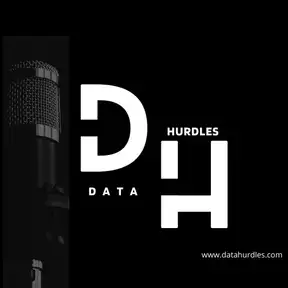AI: The Dawn of a New Era - How Localized Language Models are Shaping the Tech Landscape
Download MP3Christopher Detzel (CD): Hello and welcome to another episode of our tech podcast. I'm your host, Christopher Detzel, and today, I have with me a very special guest, Michael Burke from Reltio. Welcome, Michael.
Michael Burke (MB): Thank you for having me, Chris. I'm excited to be here.
CD: So, let's dive right in. We're seeing a lot of buzz around large language models. Can you tell us more about this?
MB: Absolutely, Chris. Large language models are becoming quite a game-changer in the tech world. These models are being trained to generate human-like text and are opening up new opportunities. One of the most exciting developments is localized language models. These models can run on a device locally without needing an internet connection, which is a massive step forward.
CD: That's interesting. Now, there's one large language model that has been getting a lot of attention - Meta's AI's llama. Can you tell us a bit about it?
MB: Sure. Llama is a fascinating model, and it's just an example of how these large language models are becoming increasingly accessible. Some of these models are even available under non-commercial licenses, which is remarkable.
CD: You've mentioned offline large language models. Can you share any experience you've had with them?
MB: Of course. I remember a time when I was on a flight, and I lost my internet connection. I had a localized large language model on my device, and I was able to interact with it and continue working without any interruption. It shows the potential of these models to function independently of internet connectivity.
CD: That's quite impressive. Can you tell us about the broader implications of this technology?
MB: These large language models have the potential to revolutionize many areas, particularly the Internet of Things (IoT) space. By giving IoT devices the ability to understand and interpret the world around them in real-time without needing an internet connection, we can enable them to provide AI capabilities in areas where it was previously not possible.
CD: And what about the future of this technology?
MB: While there are certainly ethical and societal challenges that need to be considered, I believe the pace of progress in this field is rapid. I think these models could soon become an integral part of our daily lives.
CD: Welcome back, listeners. In our second segment, let's discuss the democratization of AI. Michael, what are your thoughts?
MB: Well, Chris, we're witnessing an era where startups and smaller companies can access the same computational power and data resources that were once exclusive to tech giants like Google and Microsoft. The democratization of AI has opened up new possibilities, fostering innovation and leveling the playing field.
CD: And what about the role of AI models and their parameters?
MB: Models with larger parameters can hold more variables and can answer more complex questions. However, the larger the number of parameters, the more computational power is needed to run the model. Over time, we can expect these models to become more efficient and compact, allowing them to be run on simpler devices without compromising their capabilities.
CD: Let's touch on the idea of AI models having a certain "memory". How does this work?
MB: AI models are designed to understand the context of related queries. They can hold a number of questions in their memory, which helps improve their understanding and provide more accurate responses. As these models continue to evolve, they'll be able to hold more questions, leading to better contextual understanding.
CD: Moving on, let's talk about the application of machine learning models in product companies. What are the potential advantages?
MB: The future of AI in product companies lies in more efficient and cost-effective devices. The idea is not to have devices that can answer every question, but devices that excel at answering a subset of questions related to their specific domain. For instance, imagine training a model on a company's documentation, online community, and support-related questions. The result would be a highly specialized tool capable of responding to and learning from a specific set of questions.
CD: That's a fascinating concept. Can you also explain the role of context in model training?
MB: Yes, context is key in model training. It's about understanding concepts like Master Data Management (MDM) and maintaining data quality. This becomes especially important when training models for specific industries or applications.
CD: I understand there's something called "model cards" in machine learning. Can you tell us more about that?
MB: Model cards are documents that provide key information about a machine learning model. They help increase transparency by communicating what information the models are trained on and who they're intended for. This is a step towards better traceability and accountability for these models.
CD: And what about transformers in machine learning?
MB: Transformers are models designed to understand and recognize the relationships and connections between words and concepts. They use a self-attention mechanism to understand different ways to ask the same question, thereby improving the model's ability to understand and respond to queries.
CD: As we wrap up, let's explore potential future applications of machine learning models. Where do you see these models being used?
MB: One area that holds great potential is the stock market. Imagine machine learning models that can understand perception at a global level and make real-time decisions based on this understanding. But, of course, the potential applications are nearly limitless.
CD: That's a fantastic note to end on. Michael, thank you for joining us today and sharing your insights into the world of AI and machine learning.
MB: It's been a pleasure, Chris. Thank you for having me.
CD: And to our listeners, thank you for tuning in. Join us next time as we continue to explore the ever-evolving tech landscape. Until then, stay safe and keep innovating!



